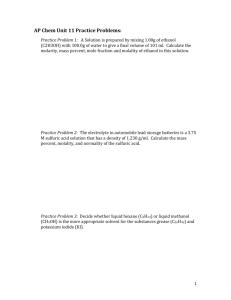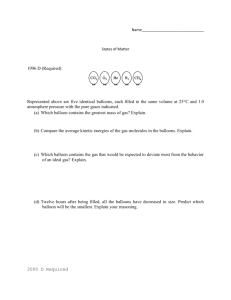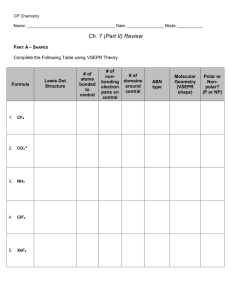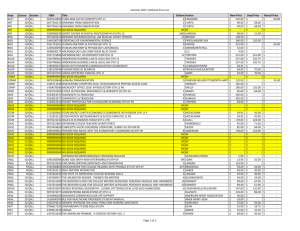Chem 4581
advertisement
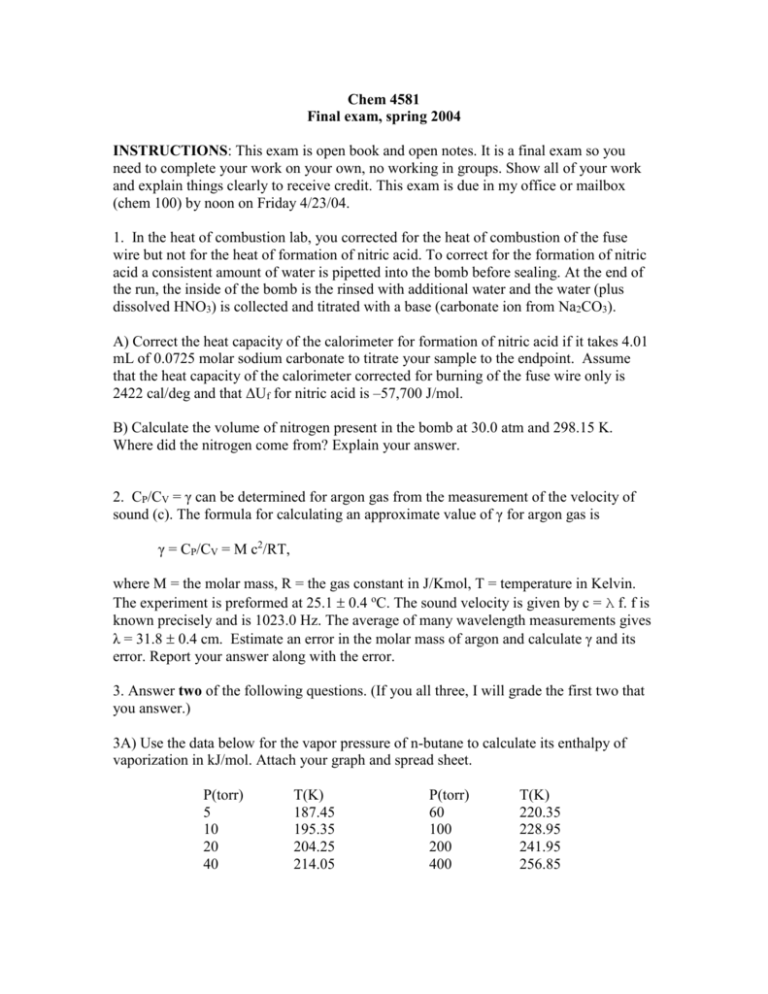
Chem 4581 Final exam, spring 2004 INSTRUCTIONS: This exam is open book and open notes. It is a final exam so you need to complete your work on your own, no working in groups. Show all of your work and explain things clearly to receive credit. This exam is due in my office or mailbox (chem 100) by noon on Friday 4/23/04. 1. In the heat of combustion lab, you corrected for the heat of combustion of the fuse wire but not for the heat of formation of nitric acid. To correct for the formation of nitric acid a consistent amount of water is pipetted into the bomb before sealing. At the end of the run, the inside of the bomb is the rinsed with additional water and the water (plus dissolved HNO3) is collected and titrated with a base (carbonate ion from Na2CO3). A) Correct the heat capacity of the calorimeter for formation of nitric acid if it takes 4.01 mL of 0.0725 molar sodium carbonate to titrate your sample to the endpoint. Assume that the heat capacity of the calorimeter corrected for burning of the fuse wire only is 2422 cal/deg and that ΔUf for nitric acid is –57,700 J/mol. B) Calculate the volume of nitrogen present in the bomb at 30.0 atm and 298.15 K. Where did the nitrogen come from? Explain your answer. 2. CP/CV = γ can be determined for argon gas from the measurement of the velocity of sound (c). The formula for calculating an approximate value of γ for argon gas is γ = CP/CV = M c2/RT, where M = the molar mass, R = the gas constant in J/Kmol, T = temperature in Kelvin. The experiment is preformed at 25.1 0.4 oC. The sound velocity is given by c = λ f. f is known precisely and is 1023.0 Hz. The average of many wavelength measurements gives λ = 31.8 0.4 cm. Estimate an error in the molar mass of argon and calculate γ and its error. Report your answer along with the error. 3. Answer two of the following questions. (If you all three, I will grade the first two that you answer.) 3A) Use the data below for the vapor pressure of n-butane to calculate its enthalpy of vaporization in kJ/mol. Attach your graph and spread sheet. P(torr) 5 10 20 40 T(K) 187.45 195.35 204.25 214.05 P(torr) 60 100 200 400 T(K) 220.35 228.95 241.95 256.85 3B) The decomposition of ammonia on a tungsten wire has been studied and found to be approximately 0th order at pressures between 200 and 400 torr. Explain this result assuming Langmuir’s theory of adsorption. Note: Langmuir’s theory is another theory used to explain the adsorption of molecules on metal surfaces in the study of the kinetics of surface catalysis. This theory can be used to derive the following expression for the rate of a decomposition reaction: A B + C. Rate = (k S0 bA PA)/( 1 + bA PA + bB PB + bC PC) Where S0 = the surface area available, b = the adsorption constant for a particular material (A, B or C), P = the partial pressure of A, B or C. To answer this question consider what conditions would reduce the above equation to a 0th order expression. 3C) IF YOU CHOOSE TO ANSWER THIS QUESTION YOU MUST ATTACH A COPY OF YOUR NAPTHALENE/DIPHENYLAMINE PHASE DIAGRAM. If the temperature dependence of the heat of fusion is neglected, the boundary curves separating the liquid solution phase from the liquid solution + solid phase can be approximated by the following formula: R ln xB = Hm,fus,B ( 1/TB* - 1/T), Where xB = mole fraction of B, TB* = the boiling point of B, and B is either naphthalene or diphenlyamine depending on which boundary curve you are considering. Use this equation to estimate the molar enthalpy of fusion for naphthalene and diphenylamine.


